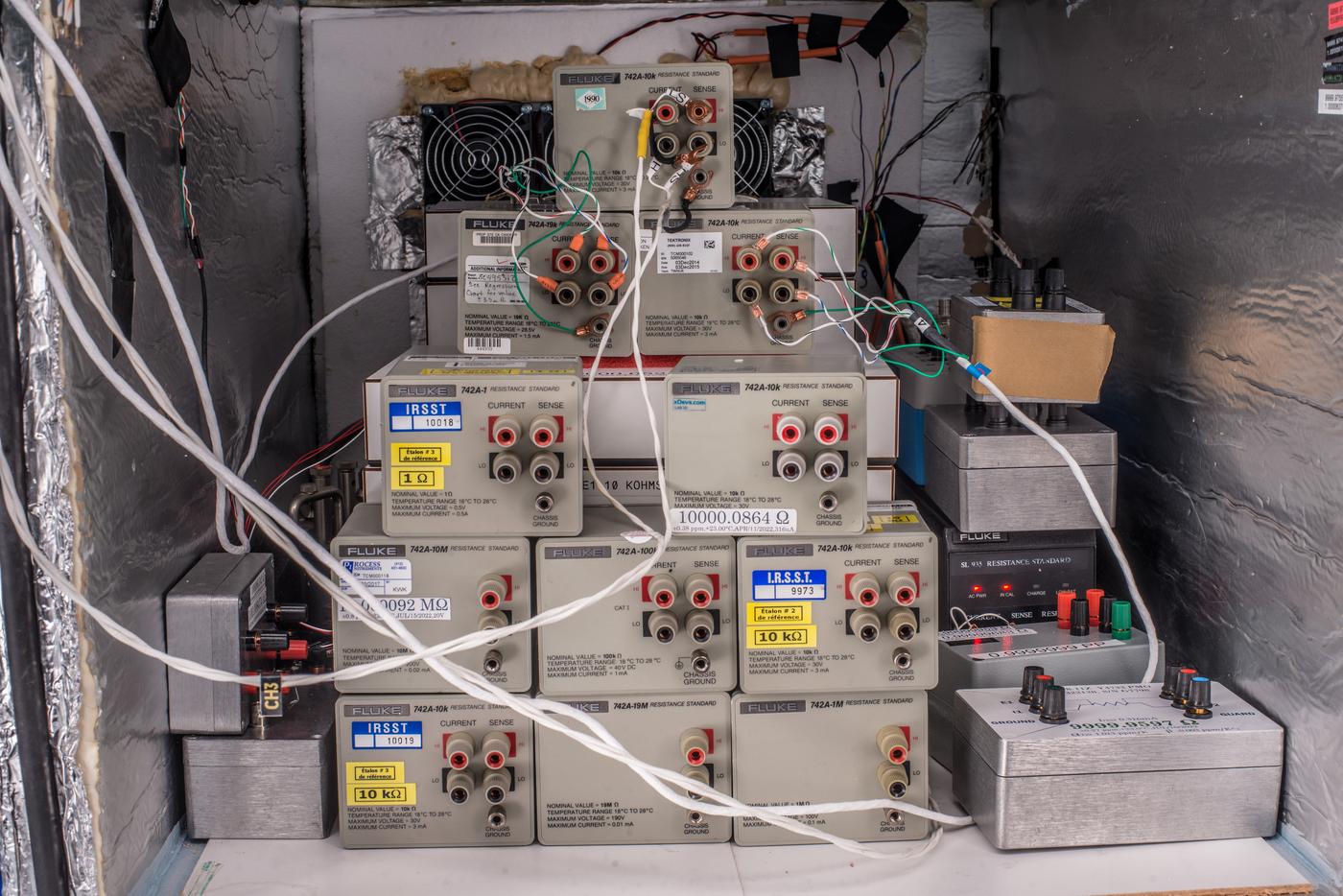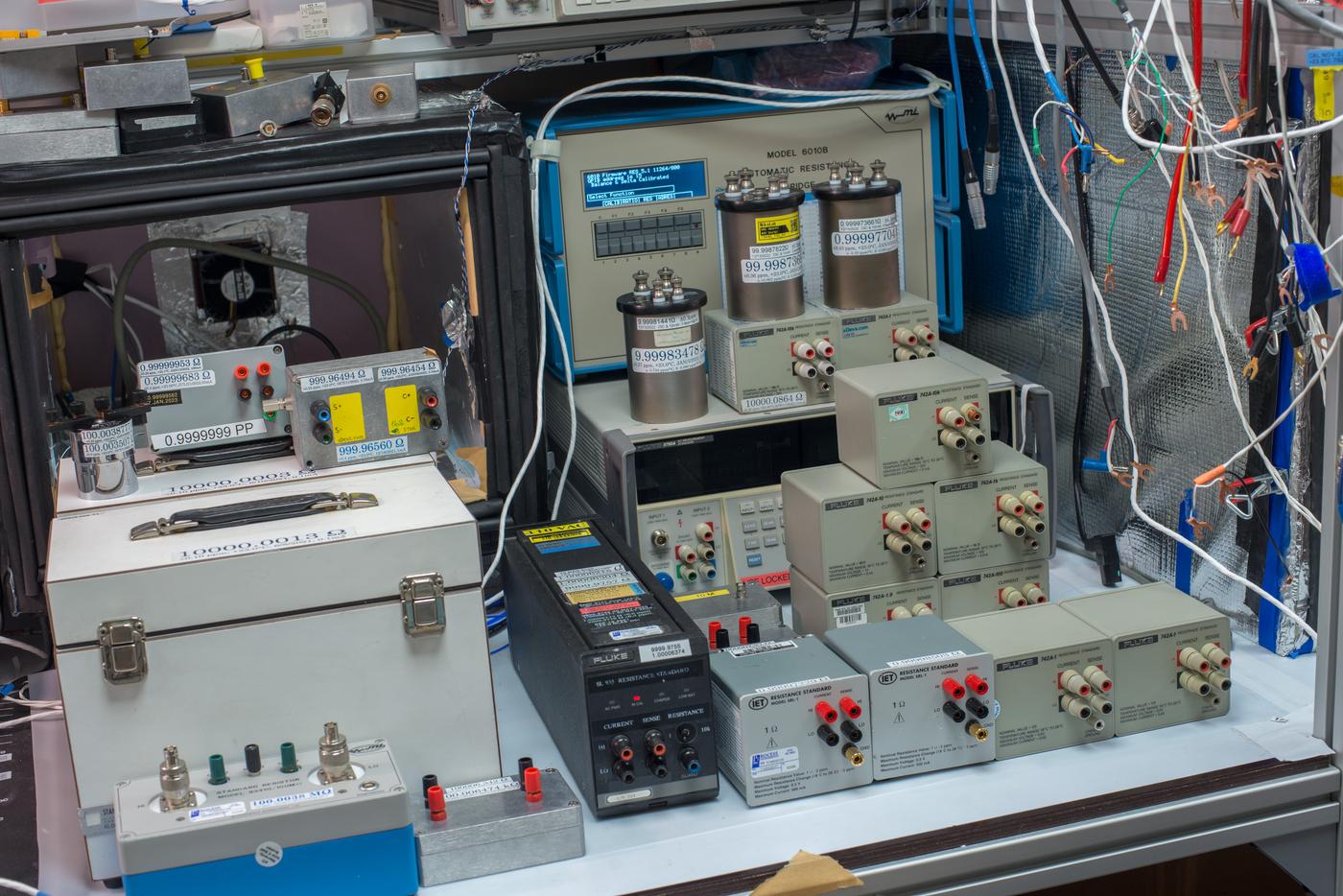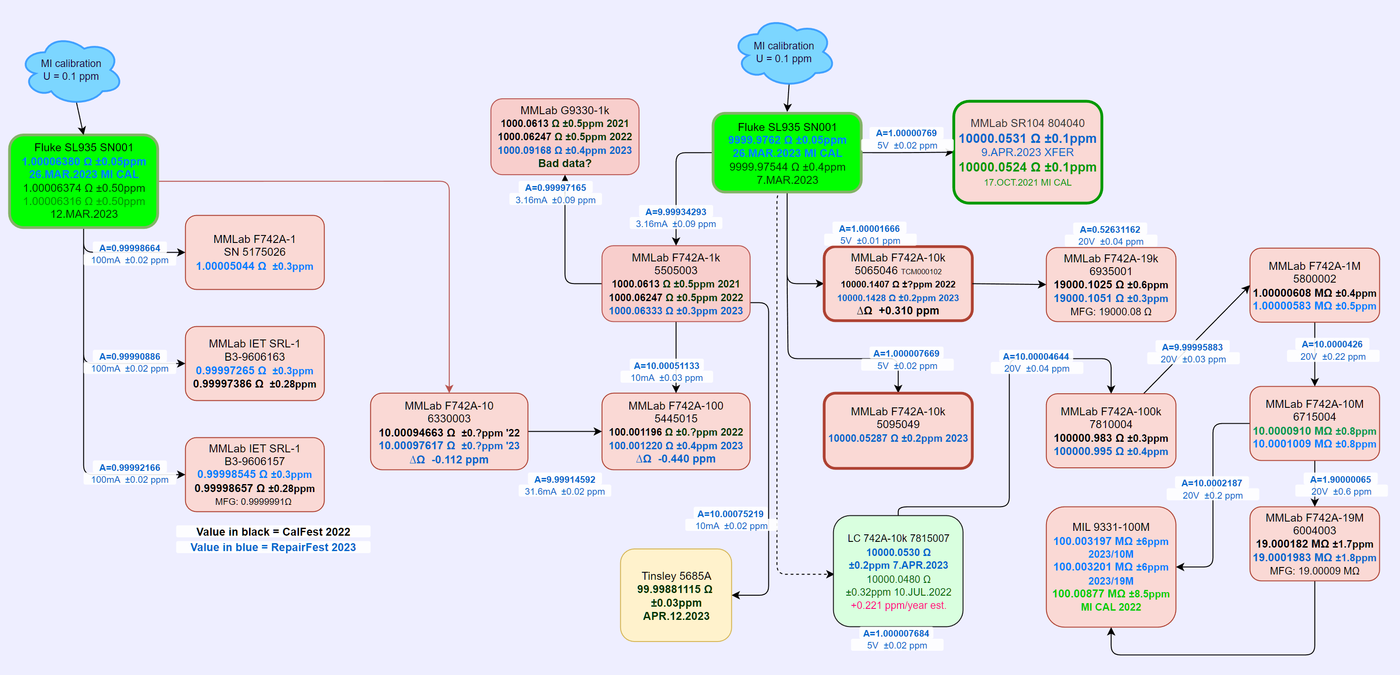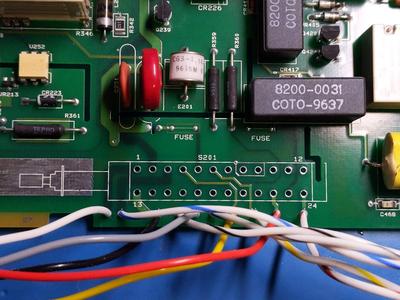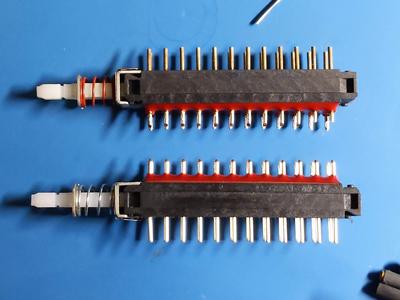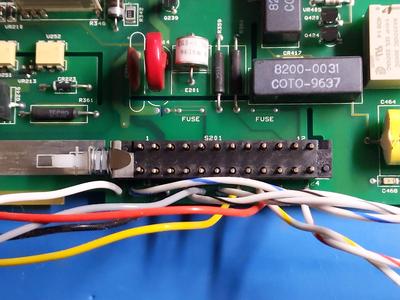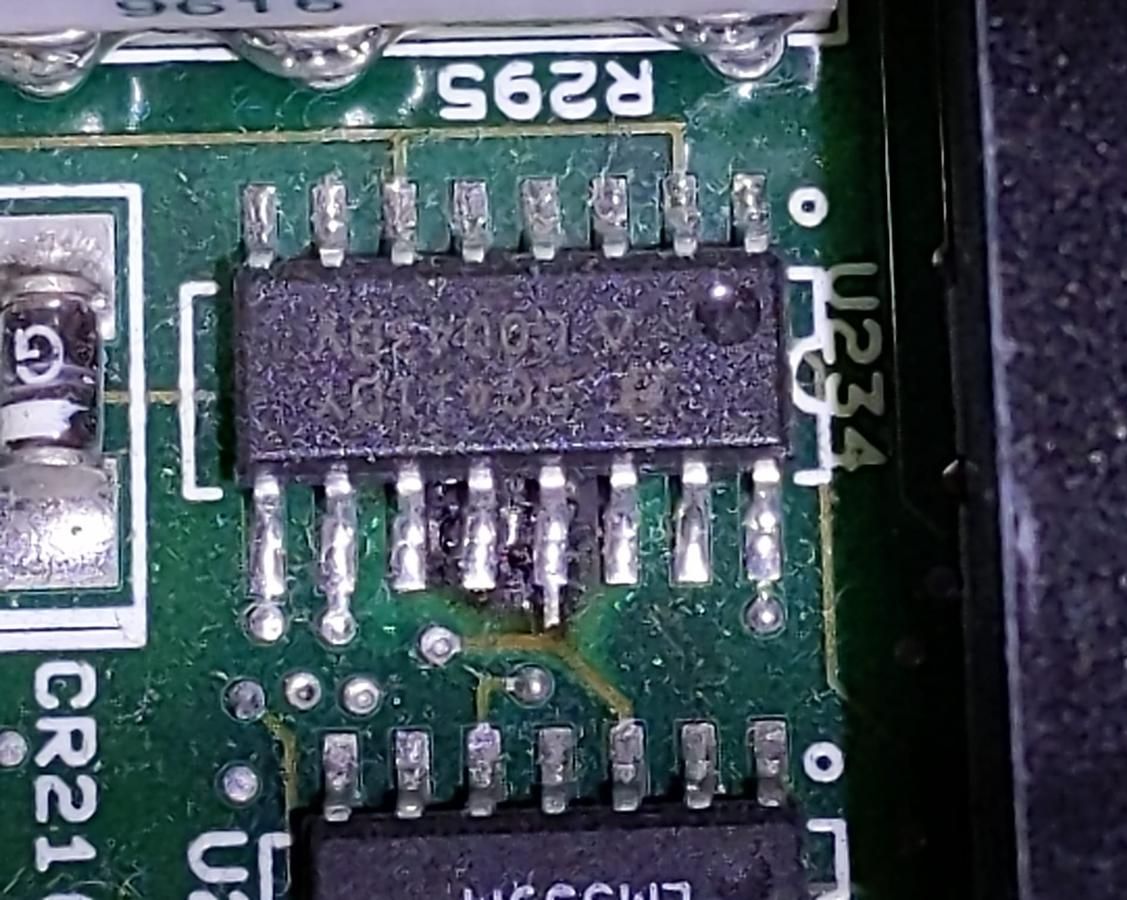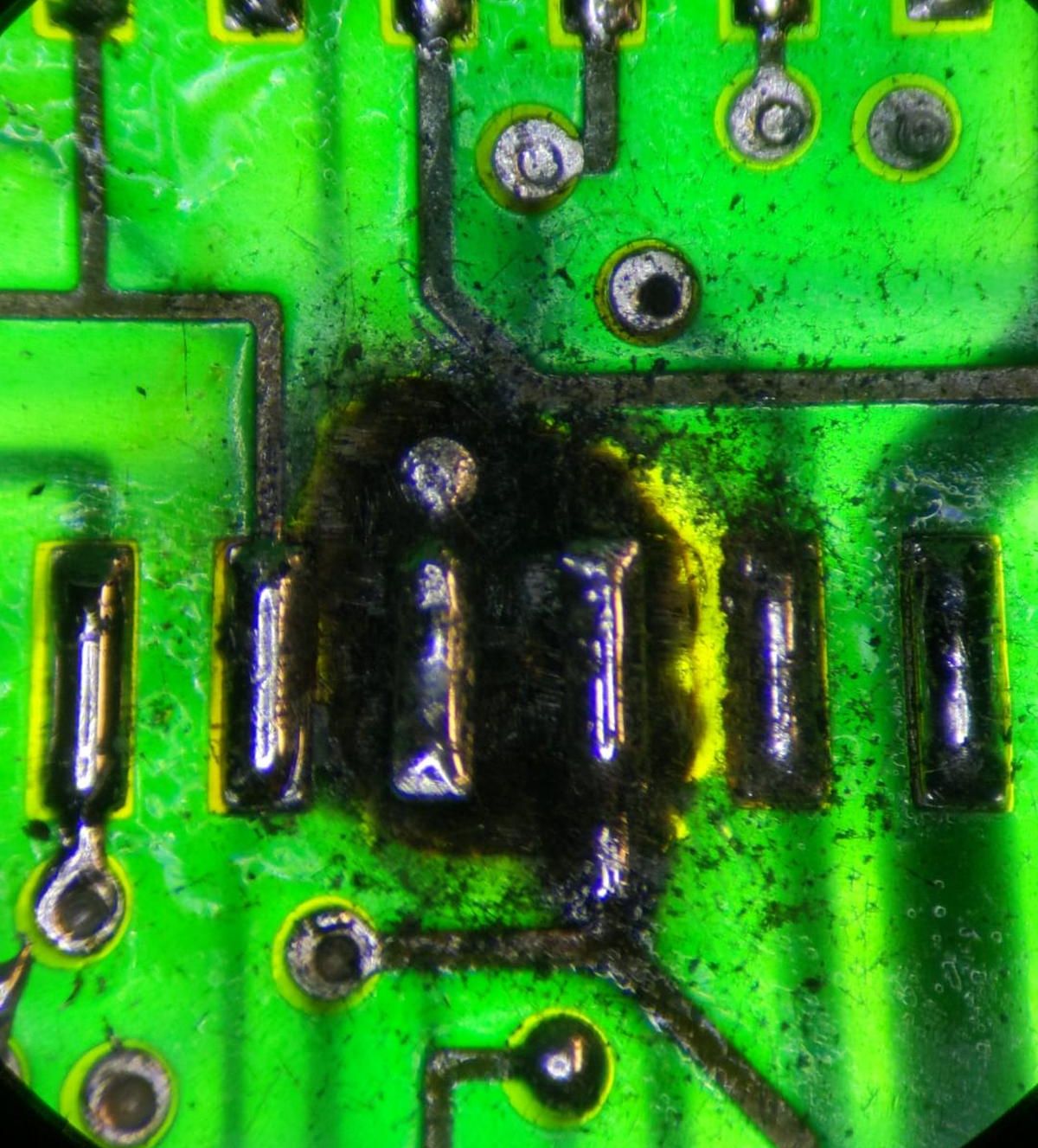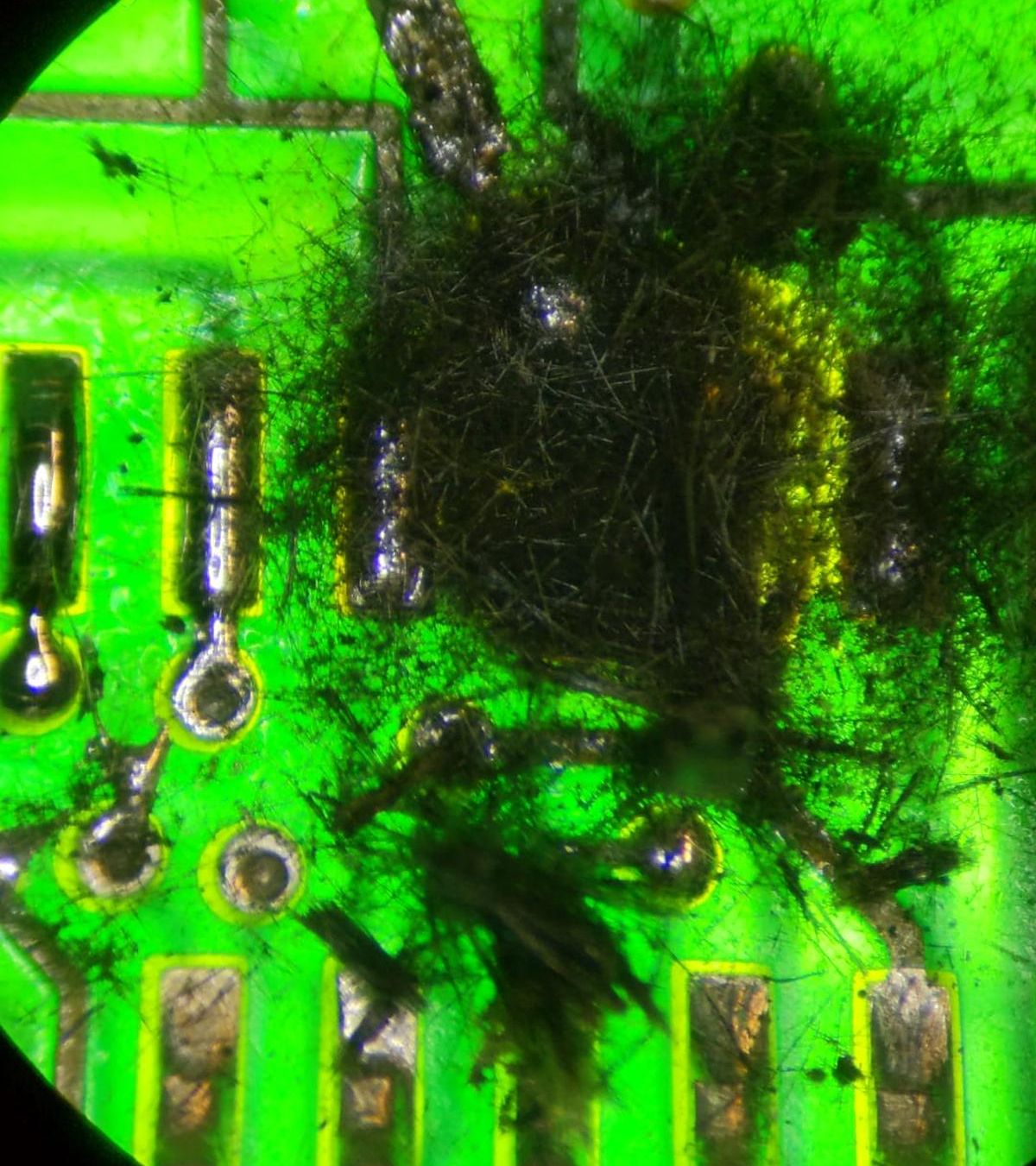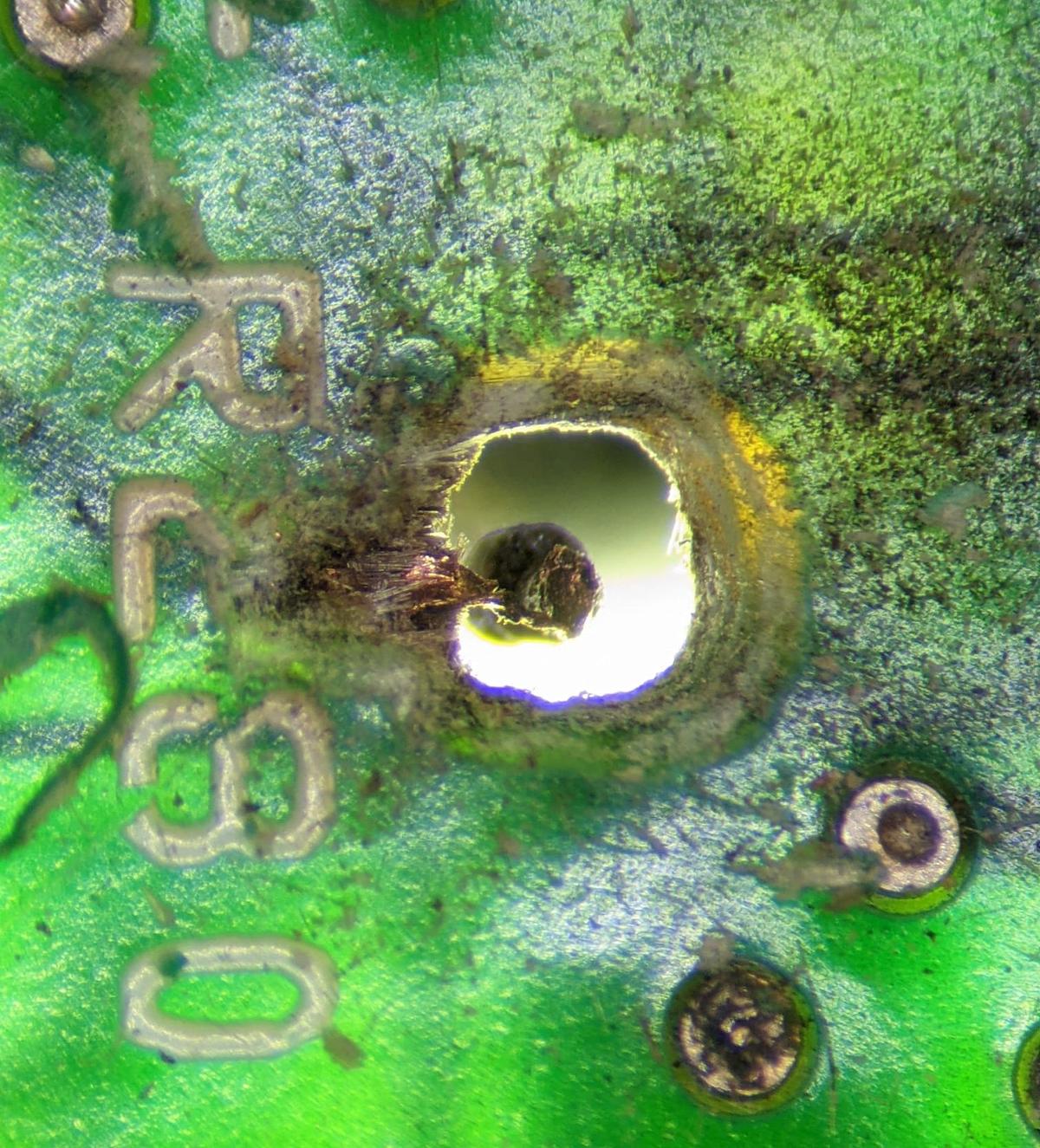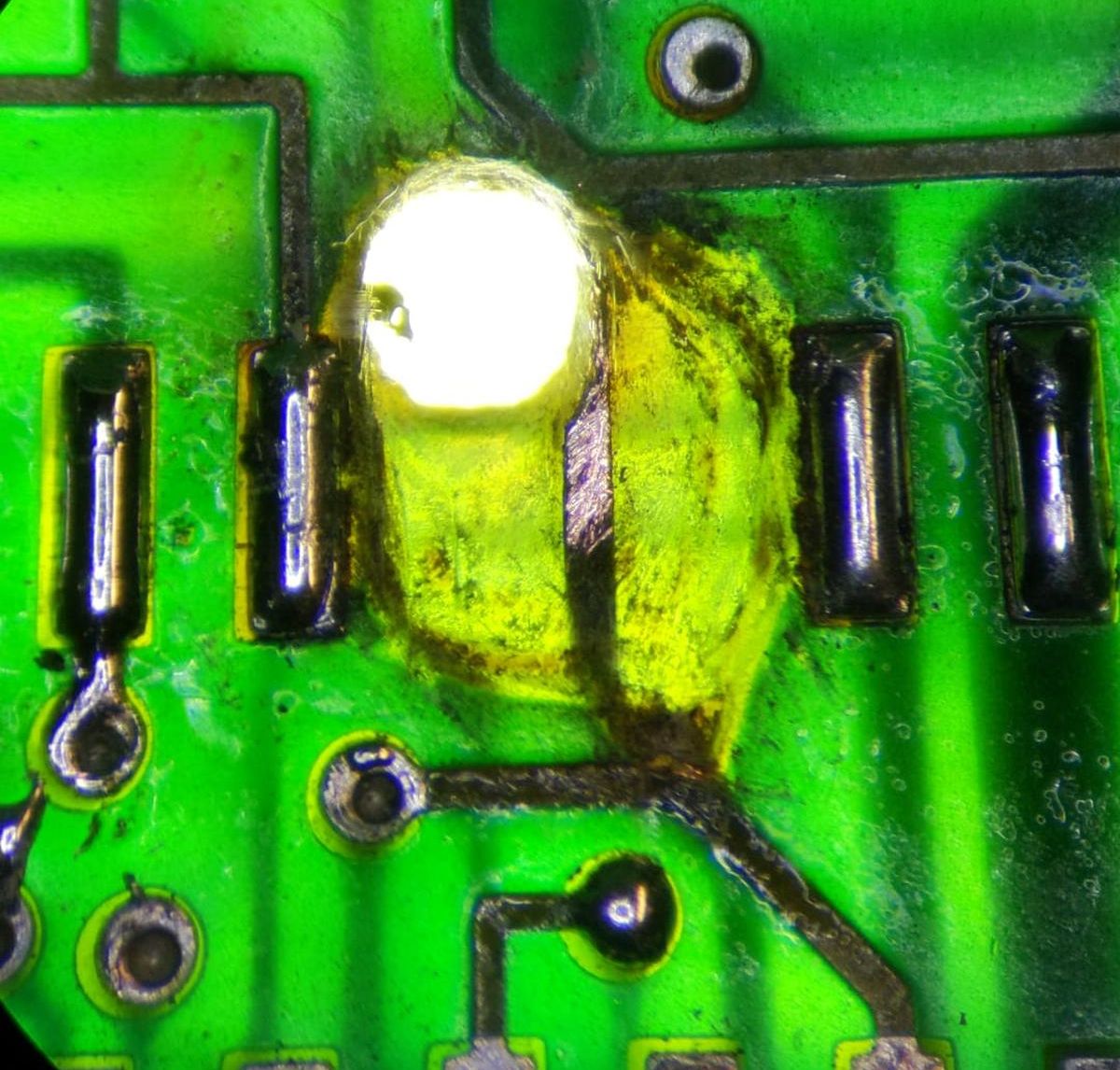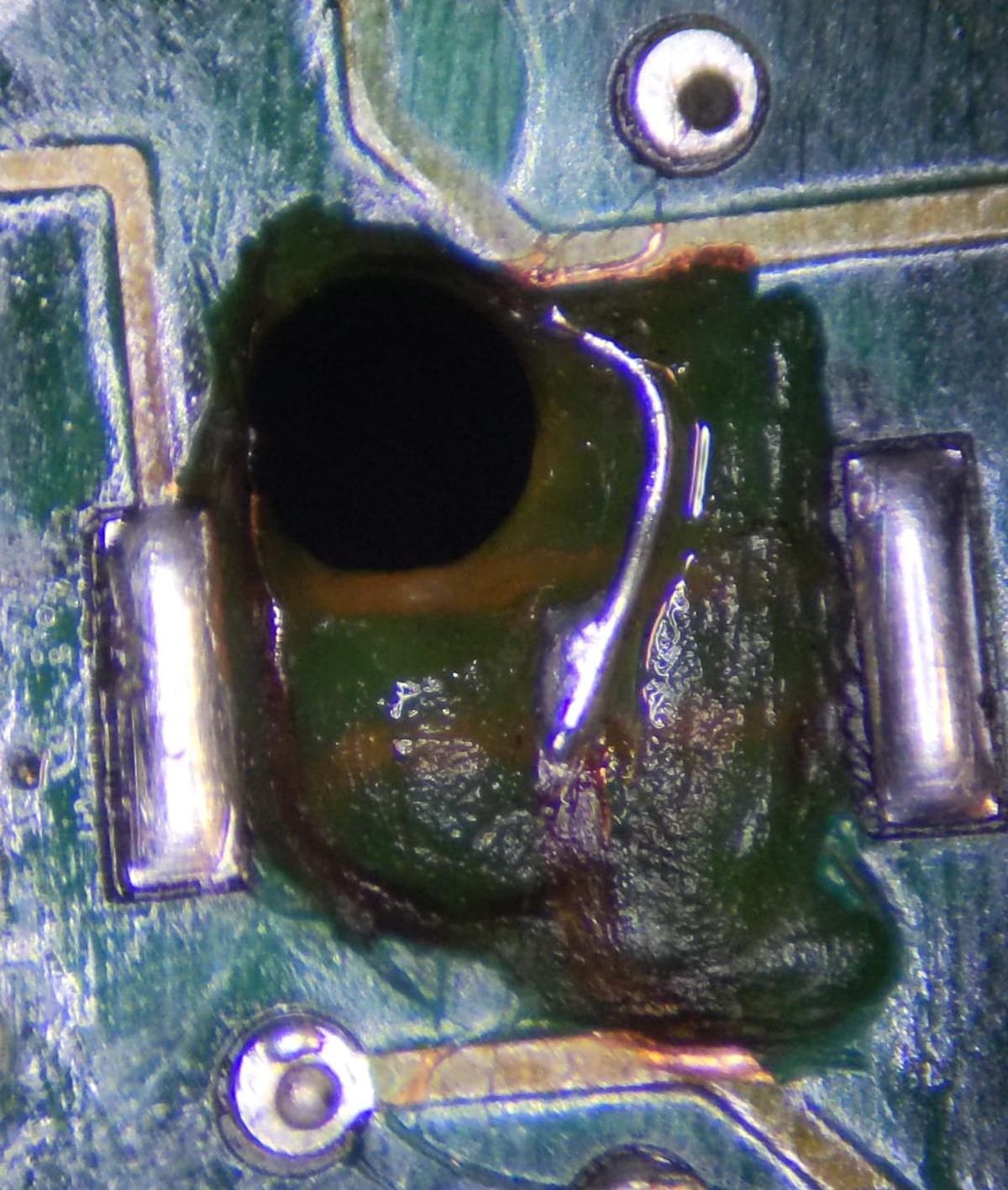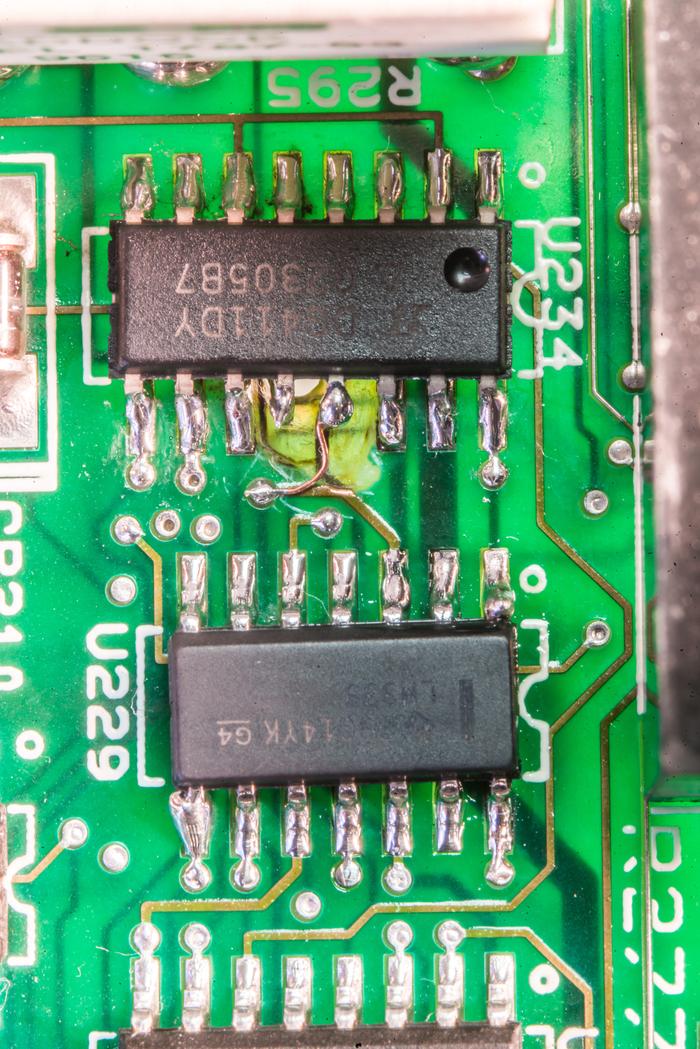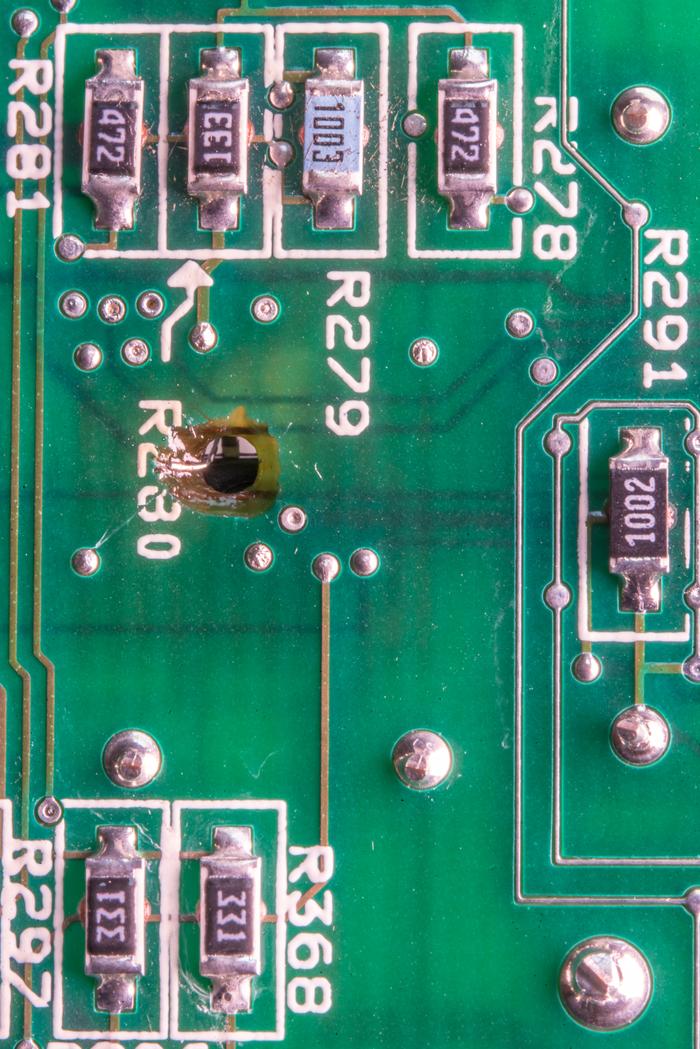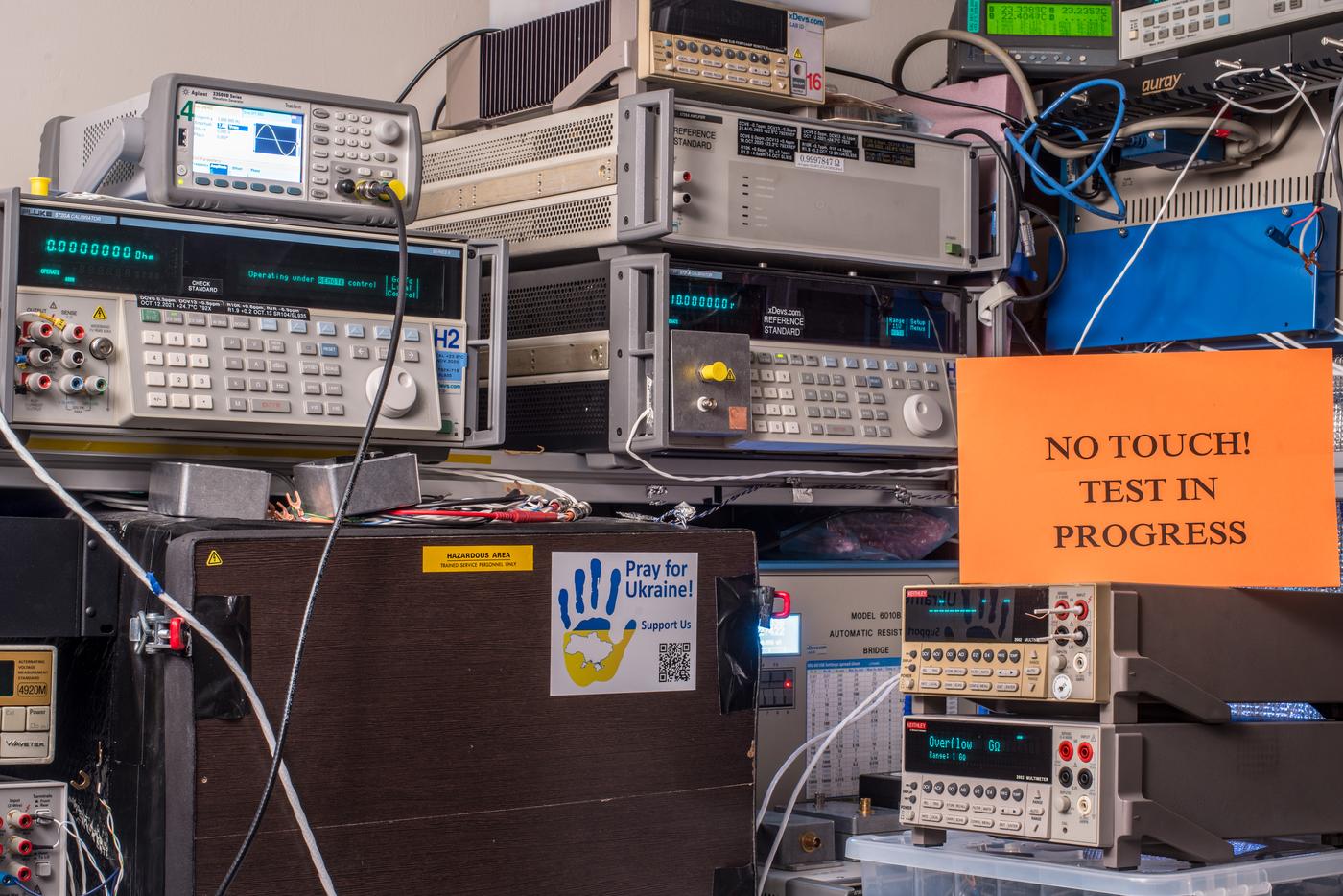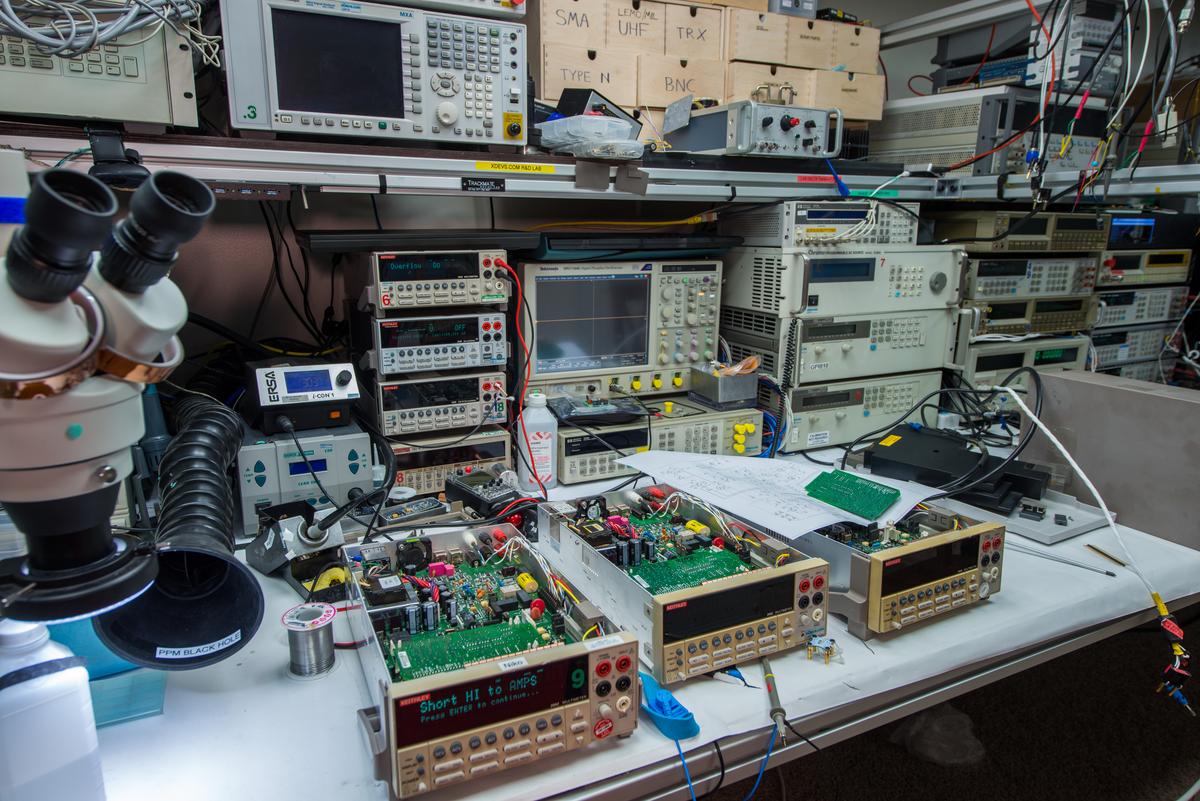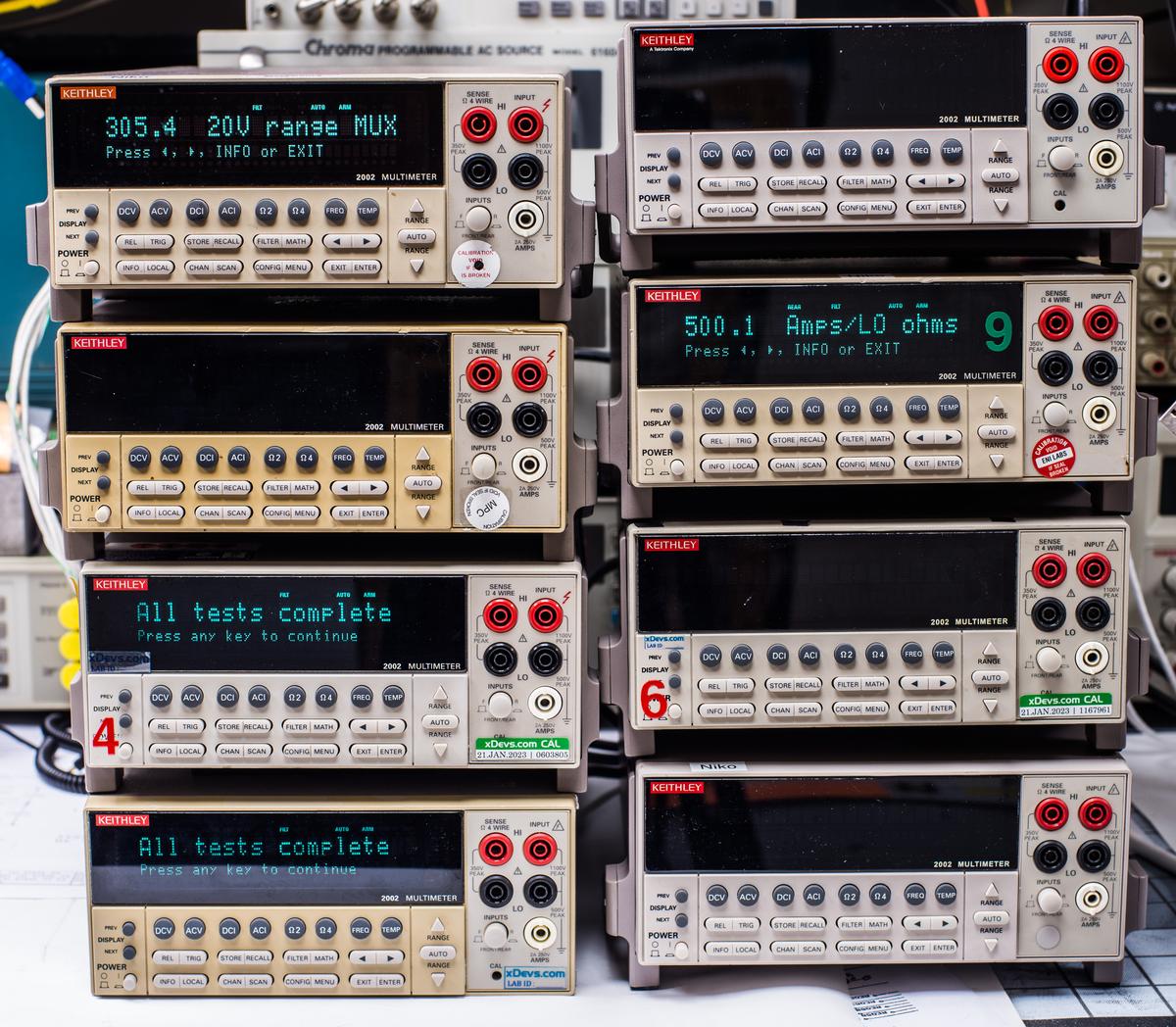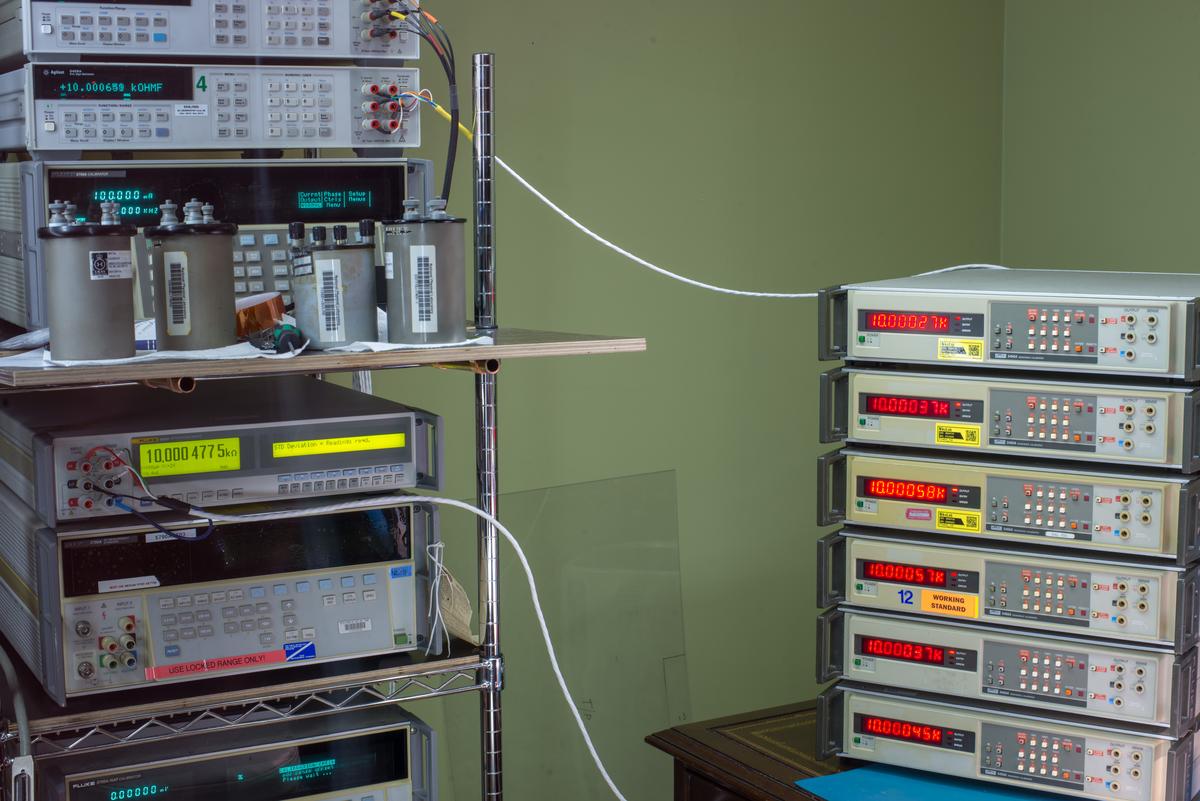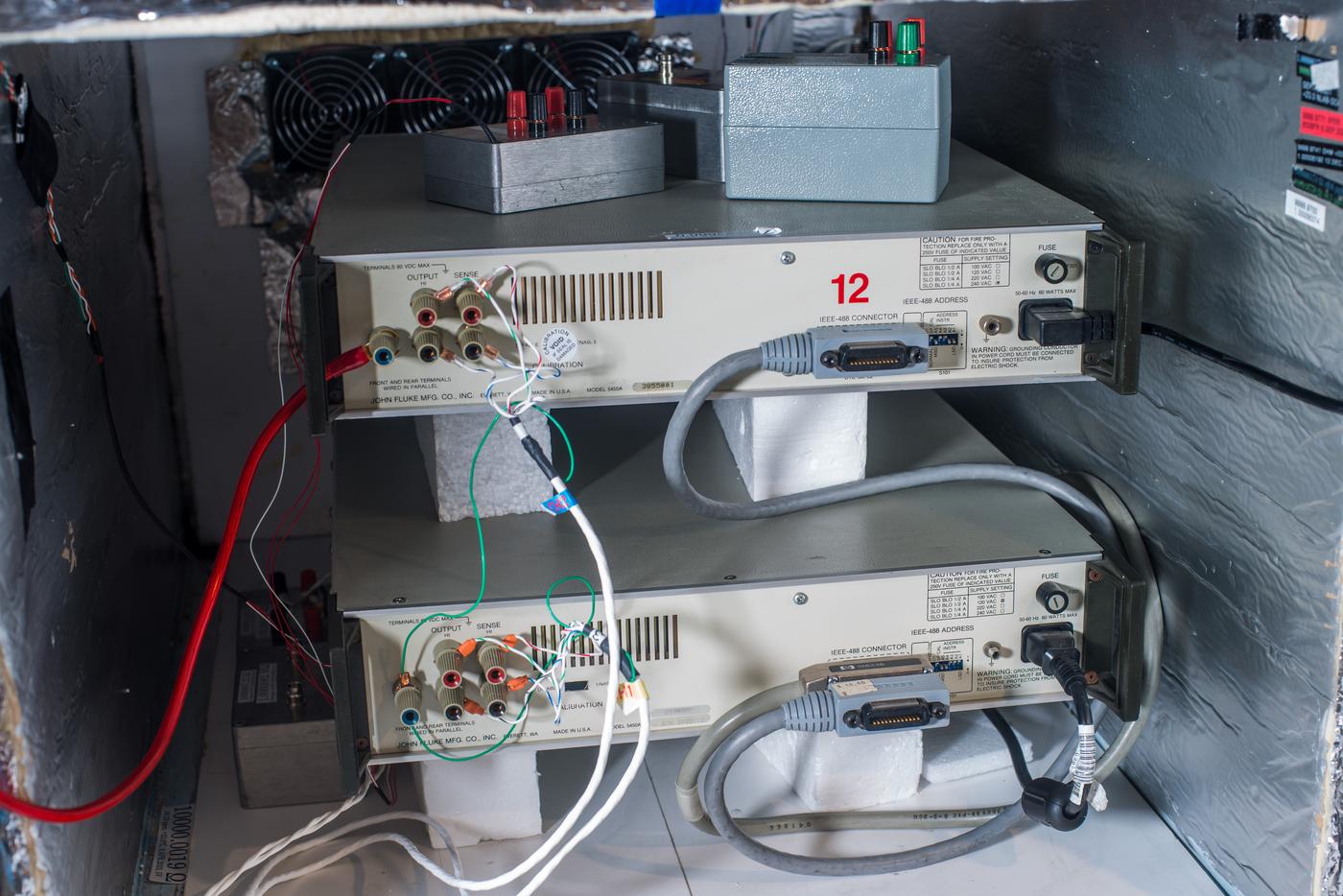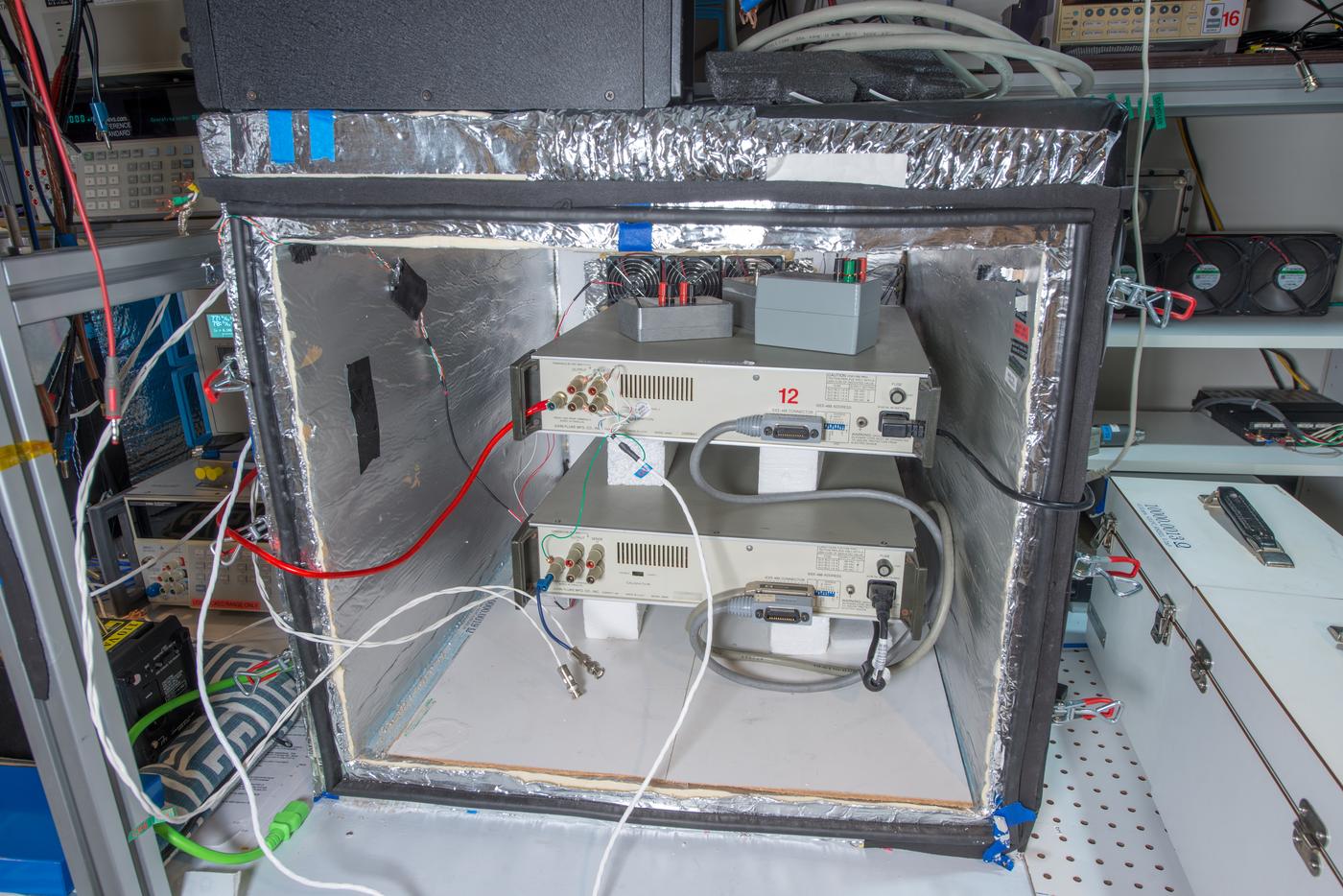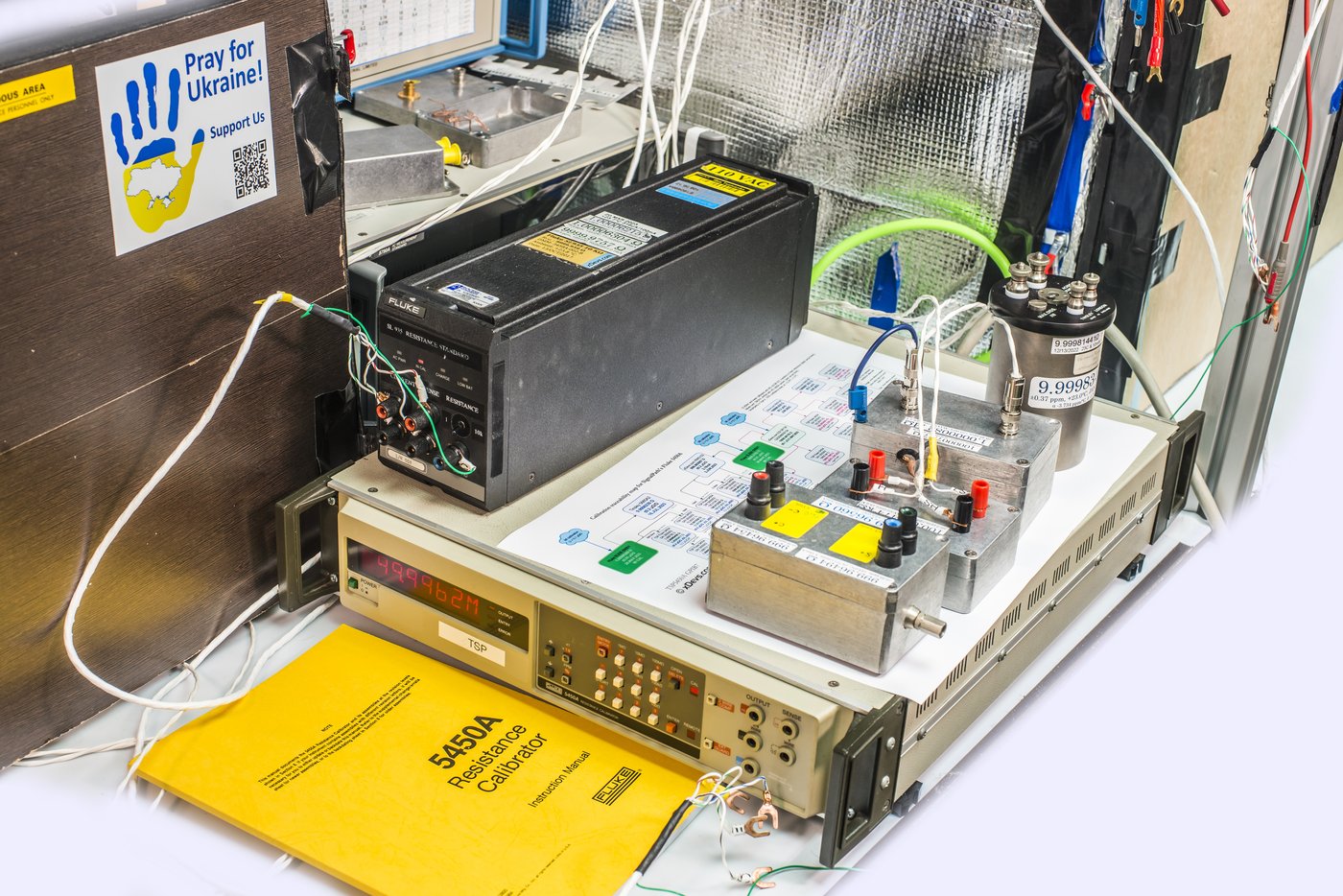- Introduction
- CalFest 2023 members
- Few notes on CalFest event profile
- Resistance standards annual calibration
- LC’s Keithley 2002 repair
- Intercomparison and repairs for other Keithley 2002
- Calibration for xDevs members Fluke 5450A’s
- TheSignalPath’s Fluke 5450A calibration
- Conclusion and future plans
Intro
Calibration festival is small unofficial offline event dedicated to meet with passionate people related to science of measurements – metrology. CF’s main purpose is to share the costs of high level calibrations for electrical units such as SI Volt and Ohm into our hobby labs and personal equipment, as well as showcase what is possible to achieve for metrology applications with limited budgets.
One of the main inspiration sources – inter-lab comparisons performed on the level of NMI and reports published on BIPM KCDB. Idea is to replicate similar project but at much lower hobby-level personal budget and scale. None of us is able to cover full-featured measurement laboratory or establish direct realization of SI unit at quantum level, but teamed up together we can hopefully get pretty close to the top of the uncertainty pyramid in specific measurements.
CF2023 main meeting event was held offline in NJ, USA location during 9 April, 2023 – 16 April, 2023. However, preparation for experiments and measurements with equipment dedicated for event began as early as February 2023 and completed by July 2023. Most of the experiments were automated with Python to allow execution in parallel and reduce risk of human-induced errors in data.
Automation was handled by compact single-board computer Raspberry Pi with communications over GPIB and Ethernet interfaces. Software used for most of experiments is written in Python language. Key tools are internal use xDevs CalKit packages, as well as publicly available xDevs TECkit package. All experiments results were recorded in CSV-type RAW data files and further processed by various analysis packages. In-house analysis Python apps and licensed commercial MIL 6000B software was used for high resistance measurements with MIL 6000A bridge system.
Disclaimer
Redistribution and use of this article or any images or files referenced in it, in source and binary forms, with or without modification, are permitted provided that the following conditions are met:
- Redistribution of articles must retain the above copyright notice, this list of conditions, link to this page (/article/rf2023/) and the following disclaimer.
- Redistribution of files in binary form must reproduce the above copyright notice, this list of conditions, link to this page (/article/rf2023/), and the following disclaimer in the documentation and/or other materials provided with the distribution, for example Readme file.
All information posted here is hosted just for education purposes and provided AS IS. In no event shall the author, xDevs.com site, or any other 3rd party, including guest lab members be liable for any special, direct, indirect, or consequential damages or any damages whatsoever resulting from loss of use, data or profits, whether in an action of contract, negligence or other tortuous action, arising out of or in connection with the use or performance of information published here.
If you are willing to contribute or add your experience regarding test equipment, repairs or provide extra information, you can do so following these simple instructions.
Performance of each particular instrument may be worse or better than shown in this article. For details consult with manufacturer specifications and perform your own testing. Don’t take data presented here as typical results from other instruments, even of the same model/year. All data presented here is NOT accredited and NOT certified to be free of errors. Proceed with this warning in mind.
CalFest 2023 members
- TiN (pilot xDevs lab)
- IO (NJ Lab)
- TM (FL Lab)
Special guests and visiting members
This year CF2023 also invited select guests to further extend usability of performed transfers and aid community with improved measurement capabilities. These include:
- LC (Canada)
- TheSignalPath (USA)
- XS, remote only (Belgium, EU)
During this CalFest meetup multiple experiments were performed:
- DC Voltage standards comparison and SI unit calibration link at 10V
- 8½-digit Datron 1281 DMM testing
- Inter-comparison with resistance standards
- Repairs for number of Keithley 2002 8½-digit DMMs
- Troubleshooting Agilent E8257D 250 kHz – 40 GHz PSG RF source with TheSignalPath lab
- Testing Hittite HMC-T2220 20 GHz CW RF source with TheSignalPath lab
- Calibration for xDevs members Fluke 5450A’s
- Calibration for Keysight 3458A 8½-digit DMM at TheSignalPath project.
- Calibration for Fluke 5450A 1 Ω – 100 MΩ calibrator at TheSignalPath project.
Few notes on CalFest event profile
Before we continue with metrology deep dive, it is worth to mention few important aspects. xDevs.com’s CalFest is organized by small group of passionate metrology enthusiasts, who are not employed by calibration or metrology business. All members have their day job not directly metrology-related. As result there is only limited time frame and scope of projects to be pursued during and around xDevs CalFest event.
CF is NOT open to public for various of reasons. Biggest reason is location allowance with just few visiting members to participate in event. This is all done out of pocket, meaning no fancy conference hall venue availability and no marketing or sponsor budgets. Just like with any other xDevs.com publication or research there are no advertisements, no marketing and no endorsement of any kind for metrology and engineering equipment. If specific instrument or device is mentioned or demonstrated, it is done for transparency for clarity and educational purpose and does NOT mean endorsement of that product for your specific application. And sometimes we show stuff because we really like to use it in the lab too!
Goal is to have xDevs.com CalFests meets on yearly term, usually dedicated to particular set of standards and calibration experiment activity. Given the scope and interests of the project, it is often limited to high-end instruments and standards, since we trying to spread the cost burdens and difficulty of single-digit ppm uncertainty levels at key measurements in non-professional environment. As outcome from CF each event will have publicly accessible report like this one of most CF activities and projects for sharing educational and knowledge purpose. This article as result showcases these projects and measurements done within CalFest Year 2023.
As a good exanple – calibration of 10V DC Voltage standard to ±0.3 ppm uncertainty require whole lot of careful background work, long-term stable conditions, high sensitivity measurement equipment and lot of attention to details. It is not something that happens after few hours of measurements, even if one has magical golden HP3458A. This is also often way more effort than the typical hobby electronics enthusiasts are ready to invest, so people who just want 6½-digit DMM check for factory 1 year specs are not really the target audience of xDevs.com CF. It would be actually both cheaper and MUCH faster to just ship said DMM to nearest commercial calibration lab, than try to accommodate such task within xDevs.com CF.
While xDevs.com understands and appreciates the goal of metrology interlab comparisons to spread better measurement practices and provide access to lower measurement uncertainty we doing this only as educational research on limited free time available. xDevs.com CF members do NOT pay any fees or money for participation in CF, but members do pay for their standards to be calibrated at accredited top-end metrology labs and cover own travels/living expenses during CF.
Now, with all above in scope, if you still want to be a part of the next CalFest, feel free to reach out with proposal or ideas at [team]@xdevs.com. Currently participation is limited by geo to US, Canada and EU/UK for logistic reasons. Dipl.-Ing. André “branadic” Bülau is also organized number of successful metrology meetups and events in past years, such as MM2020, MM 2021 and MM 2022. These were limited to Germany geography. You can reach out to André at xDevs.com IRC usually during GMT time zone.
If you are high-end calibration laboratory or NMI and would like to support next CalFest event concept by presenting current metrology research or doing measurements on our electrical standards, it could be interesting collaboration. Please feel free to reach out here for details on such idea.
Resistance standards annual calibration
Report TBD…
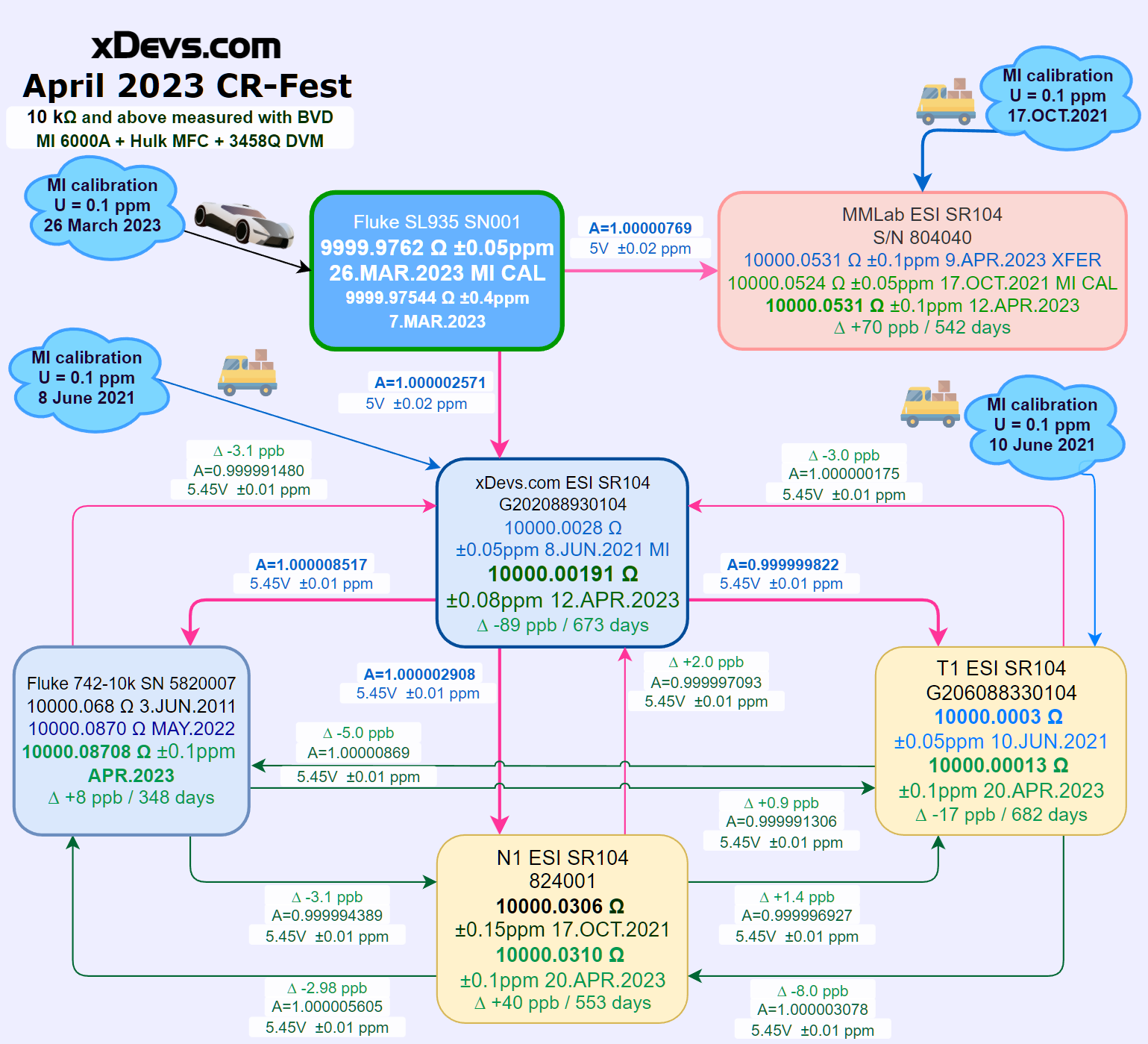
LC’s Keithley 2002 repair
This DMM was acquired by our visiting member LC for his own homelab capability improvements. It was sold on secondary market as broken , but demonstrated to power up. Early serial number of this instrument suggested manufacturing date around 1990-1994. Very common issue with these older instruments is related to leaking electrolytic capacitors near hot power regulators and subsequent destruction of fragile 4 layer analog PCB. xDevs has lot of experience repairing more than 10 different Model 2001 and some Model 2002 with this issue. So this was expected to happen here too.
After all electrolytic capacitor replacement analog PCB was carefully cleaned and inspected. No significant damage around caps was observed so next step was to power up, measure power rails for health and see what self-test process would return.
Meter threw nearly all possible errors, starting with codes for ADC.
Instrument error report after recapping:
| Error | Display message | Fault message |
|---|---|---|
| 200.1 | A/D operation | No ADC communication |
| 200.2 | A/D operation | ADC signal conditioning noisy |
| 201.2 | Testcal | Cannot measure 7V at A/D |
| 201.3 | Testcal | Cannot measure 1.75V at A/D |
| 202.2 | Integration | Integration period bit I15 |
| 202.4 | Integration | Integration period bit I14 |
| 202.6 | Integration | Integration period bit I13 |
| 202.8 | Integration | Integration period bit I12 |
| 202.10 | Integration | Integration period bit I11 |
| 202.12 | Integration | Integration period bit I10 |
| 202.14 | Integration | Integration period bit I9 |
| 202.16 | Integration | Integration period bit I8 |
| 202.18 | Integration | Integration period bit I7 |
| 202.20 | Integration | Integration period bit I6 |
| 202.22 | Integration | Integration period bit I5 |
| 202.24 | Integration | Integration period bit I4 |
| 202.26 | Integration | Integration period bit I3 |
| 202.28 | Integration | Integration period bit I2 |
| 202.30 | Integration | Integration period bit I1 |
| 202.32 | Integration | Integration period bit I0 |
| 300.2 | A/D MUX | A/D MUX 1.75V reference, X5 A/D MUX gain |
| 300.3 | A/D MUX | A/D MUX 0V reference, X50 A/D MUX gain |
| 302.1 | ADGND | MUX Signal zero to ADGND |
| 302.3 | ADGND | MUX Ohms LO to ADGND |
| 302.4 | ADGND | MUX Divider LO to ADGND |
| 303.1 | Input buffer | Input buffer |
| 305.1 | 20V range MUX | 20V range multiplexer REFHI |
| 305.2 | 20V range MUX | 20V range multiplexer REFLO |
| 305.3 | 20V range MUX | 20V range multiplexer zero |
| 306.1 | Ohms | 9.6μA ohms source |
| 306.2 | Ohms | 1.92μA ohms source |
| 401.1 | Regulator | Regulator |
| 402.1 | Freq. Switch | Frequency switch |
| 406.6 | Sample/hold | Sample and hold circuit |
| 500.1 | Amps/LO ohms | 96μA ohms/200μA DCA range |
| 500.2 | Amps/LO ohms | 960μA ohms/2mA DCA range |
| 500.6 | Amps/LO ohms | 200mA DCA range |
| 500.7 | Amps/LO ohms | 2A DCA range |
| 501.1 | Amps protect | Amps protection |
| 501.2 | Amps protect | Amps bootstrap |
| 502.1 | ACA switch | AC amps switch |
| 600.1 | Ohms sense | Ohms sense HI |
| 600.2 | Ohms sense | Ohms sense LO |
Because xDevs had multiple K2002 during meetup to be used as comparison further testing revealed that digital board is OK, but ADC module and analog boards have faults.
Replacement of the original axial fan with an Delta AFB0412SHB-SP04 (12 DCV, 40 mm², 0.414 m³/min) was done. Front/Rear Switch replaced with a brand new equivalent.
ADC appears to be noisy which is causing most of the errors. It was confirmed bad in another good K2002 unit as well. Reflowing R827 reduced amount of errors from the ADC module to 200.1, 200.2 and 202.4 in good working K2002 unit. This setup reduced the noise level by at least 100 times. Later suspect resistor network was replaced with a NOMCT16035001AT1 (isolated, 5k x 8, 0.1 %, 25 ppm/K). Tantalum capacitors (C834, C835) were upgraded to higher voltage ratings (> 25 V). Other components replaced include: U812 (SD5400C), U806 (74HC02), U807 (74HC02) and U820 (74HCT175) but it didn’t improve faults.
However the replacement of Q801 to Q804 (both VN0605T MOSFETs) cleared most errors attributed to ADC noise.
The faulty Analog board has the following issues when a working ADC is used now: 500.1, 500.2, 500.3, 500.4, 500.6, 500.7, 501.1, 501.2, 502.1. This is because Keithley 2002 also had faults and damage on analog board. U234 DG411 switch near the current sense resistor network R295 went into meltdown mode and burned the hole in PCB. Errors are most likely attributed to the damaged region near the U234 package (DG411DY).
Only way to repair such problems is to remove ALL carbonized PCB fiber/epoxy material with scalpel/dremel, restore all electrical connections on multilayer PCB.
Pads under blown PCB are removed as well to get access into board. Keithley analog board is 4 layer and does not have ground planes inside, which makes this job easy one. But steady hands and microscope are still a must.
All damaged dielectric is removed all the way thru the board, with remnant of the via hanging for it’s life on copper trace from layer 3.
Broken trace on layer 2 also need connectivity repair. For that I use single copper strand out of multistrand AWG28 cable.
And jump-wire in the cavity installed.
Common components affiliated with the 500 series errors: U233 (OP97FSZ), U220 & U234 (DG411DY), U222 (DG408DY+), U223 & 232 (MAX326CSE+), U225 (LT1097S8), U226 (LT1007ACN8), Q211 (3N163), Q212 (2N3906-G), Q213 (2SK1413), MISC: CR217, K201, R322, R334, and R342. The set of 500 series errors is related to the U229 comparator (LM339D) on the Analog board and after replacement all errors have been cleared after the U229 (LM339D) was replaced.
Keithley 2002 is repaired, fresh adjusted and calibrated. Calibration report attached. Hulk2 used as reference and verification source, except ACV function. ACV function tested with boosted Hulk1 setup (5720A + 5725A) due to volt/frequency limits.
There is minor deviation on negative polarity of 2V range, but it is likely to be systematic error due to issues with Hulks. This can be corrected in next CF2024. 2A current range points are valid only after 30 minute warm-up of shunts in K2002.
xDevs recommended to keep this K2002 intact until next cal fest, to have better understanding of drift over time. No adjustment or disassembly would help us to better judge drift and long term stability of this repaired K2002 next year.
Calibration report for Keithley 2002, as adjusted and returned, April 9, 2023
Items to do in next CalFest 2024:
- Bleach front panel to get rid of ugly brown tint
- Replace DS1243 NVRAM chip with new to avoid loosing data
- Replace large radial capacitor on digital board
- Clean-up dust
- Recalibrate, readjust and calibrate again
- Test linearity and compare data from LC lab tests
- Test tempco of all ranges/functions
Intercomparison and repairs for other Keithley 2002’s
Report TBD…
Calibration for xDevs members Fluke 5450A’s
Fluke 5450A is a nice and compact high stability resistance standard with remote control and calibration features. Despite it’s senior age and seasoned look by today’s standards it is still very high performance device. 5450A specification outline performance very similar to much more expensive and hard to get newer Fluke 5700A and Fluke 5720A. Even latest and greatest $90k Fluke 5730A has very same specification and nearly identical design of resistance output to much older and proven Fluke 5720A. Unlike 57xx series 5450A is much smaller and has format very similar to long-scale DMM, such as Keysight 3458A or Datron 1281. It is easy to ship and fit on a typical metrology bench too.
But to answer questions about performance of these old 5450A calibrators xDevs and guest members managed to combine together no less than six different units for comparison and calibration study. Units in question were:
- xDevs.com own 5450A, S/N 123456
- LC’s 5450A, S/N 2345677
- TheSignalPath’s 5450A, S/N 1234567
- NLab-1 5450A, S/N 123467
- NLab-1 5450A, S/N 123467
- NLab-1 5450A, S/N 123467
Units were tested multiple times with help of automated resistance bridge setup, with Guildline 6675A and Measurements International 4310AF ovenized decade resistance standard.
TheSignalPath’s Fluke 5450A calibration
One of the options for TSP to verify and calibrate his Fluke 5450A calibrator is to sent it for official Fluke service. Approximate cost of such calibration for 5450A is $2000 USD depending on required performance testing level. Obviously it’s quite significant price, especially for something that is not used to generate business or provide customers service, as SignalPath is educational project. So instead of doing accredited path, we can measure 5450A to best of our abilities using resistance bridges available at xDevs.com lab. This is special arrangement we decided to do within scope of CalFest 2023 meetup and provided free of any payments, purely to support SignalPath project and ensure good quality of resistance measurements at TSP Lab.
4W verification procedure used to calibrate output of Fluke 5450A function. 4-wire kelvin connection between DUT 5450A and reference bridge system. Current comparator MIL 6010B used for resistance points below 10 kΩ and binary voltage divider system bridge MIL 6000A was used for 10 kΩ and higher resistances. DUT 5450A was kept at fixed +23.0 °C air bath temperature for 10 kΩ and higher measurements.
Additional checks with different currents were performed for 1 Ω and 1000 Ω outputs, as well as direct measurements with Keysight 3458A DMM. All reference transfer resistance standards and primary calibration standards were maintained at fixed +23.0 °C airbath temperature. All interconnects were done with PTFE-insulated shielded cables with low thermal interfaces.
| TheSignalPath’s Fluke 5450A, Last adjustment or calibration date unknown. Performance verification xDevs.com 27.JUL.2023 | ||||||||
|---|---|---|---|---|---|---|---|---|
| 4-wire copper ports at the rear of calibrator were used with PTFE wiring to bridge systems | ||||||||
| 5450A Test point | Previous 5450A value | DUT measured | Uncertainty | Test current | Measured TCR | Measured deviation | 1 year factory spec | Result2 |
| 1 Ω : 1 Ω RSTD | 0.999766 Ω | 0.99969458 Ω | 0.4 µΩ/Ω | 50mA and 100mA | ± 0.3 µΩ/Ω/°C | -72 µΩ/Ω | ± 110 µΩ/Ω | PASS, 65% |
| 1.9 Ω : 1 Ω RSTD | 1.899101 Ω | 1.8988964 Ω | 0.5 µΩ/Ω | 19mA | ± 1.0 µΩ/Ω/°C | -110 µΩ/Ω | ± 100 µΩ/Ω | FAIL, 110% |
| 10 Ω : 1 Ω RSTD | 10.00201 Ω | 10.001930 Ω | 0.5 µΩ/Ω | 10mA | ± 1.1 µΩ/Ω/°C | -7.4 µΩ/Ω | ± 33 µΩ/Ω | PASS, 22% |
| 19 Ω : 10 Ω RSTD | 19.00310 Ω | 19.002974 Ω | 0.5 µΩ/Ω | 5.26 mA | ± 0.8 µΩ/Ω/°C | -6.6 µΩ/Ω | ± 31 µΩ/Ω | PASS, 21% |
| 100 Ω : 1000 Ω RSTD | 100.0108 Ω | 100.012350 Ω | 0.4 µΩ/Ω | 10 mA | ± 0.9 µΩ/Ω/°C | +15.5 µΩ/Ω | ± 16 µΩ/Ω | FAIL, 97% |
| 190 Ω : 1000 Ω RSTD | 190.0198 Ω | 190.02268 Ω | 1 µΩ/Ω | 5.26 mA | ± 0.6 µΩ/Ω/°C | -15.2 µΩ/Ω | ± 15.5 µΩ/Ω | FAIL, 98% |
| 1000 Ω : 1000 Ω RSTD | 1000.001 Ω | 1000.0033 Ω | 0.5 µΩ/Ω | 1 mA and 3.16 mA | ± 0.3 µΩ/Ω/°C | -2.2 µΩ/Ω | ± 13.5 µΩ/Ω | PASS, 16% |
| 1900 Ω : 1000 Ω RSTD | 1900.037 Ω | 1900.0543 Ω | 0.6 µΩ/Ω | 0.526 mA | ± 0.3 µΩ/Ω/°C | +9.7 µΩ/Ω | ± 13 µΩ/Ω | FAIL, 75% |
| 10 kΩ : 10 kΩ RSTD | 10000.22 Ω | 10000.2447 Ω | 0.4 µΩ/Ω | 0.316 mA | ± 0.14 µΩ/Ω/°C | -8.5 µΩ/Ω | ± 13 µΩ/Ω | PASS, 65% |
| 19 kΩ : 10 kΩ RSTD | 19.00084 kΩ | 19.0007965 kΩ | 0.2 µΩ/Ω | 0.7 mA | Not tested, 5450A fixed at +23.0 °C bath | +7.7 µΩ/Ω | ± 12.5 µΩ/Ω | PASS, 62% |
| 100 kΩ : 100 kΩ RSTD | 100.0037 kΩ | 100.005406 kΩ | 0.4 µΩ/Ω | 100 µA | Not tested, 5450A fixed at +23.0 °C bath | +17.1 µΩ/Ω | ± 14 µΩ/Ω | FAIL, 122% |
| 190 kΩ : 100 kΩ RSTD | 190.0084 kΩ | 190.01109 kΩ | 0.4 µΩ/Ω | 70 µA | Not tested, 5450A fixed at +23.0 °C bath | +14.2 µΩ/Ω | ± 13.5 µΩ/Ω | FAIL, 105% |
| 1 MΩ : 100 kΩ RSTD | 1.000049 MΩ | 1.00006931 MΩ | 0.6 µΩ/Ω | 18.2 µA | Not tested, 5450A fixed at +23.0 °C bath | +20.3 µΩ/Ω | ± 19 µΩ/Ω | FAIL, 107% |
| 1.9 MΩ : 100 kΩ RSTD | 1.900064 MΩ | 1.9000803 MΩ | 1 µΩ/Ω | 10 µA | Not tested, 5450A fixed at +23.0 °C bath | +8.6 µΩ/Ω | ± 19 µΩ/Ω | PASS, 45% |
| 10 MΩ : 1 MΩ RSTD1 | 10.00011 MΩ | 9.9996373 MΩ | 2 µΩ/Ω | 1.82 µA | Not tested, 5450A fixed at +23.0 °C bath | -47.3 µΩ/Ω | ± 50 µΩ/Ω | FAIL, 95% |
| 19 MΩ : 1 MΩ RSTD1 | 19.00046 MΩ | 18.998438 MΩ | 3 µΩ/Ω | 1 µA | Not tested, 5450A fixed at +23.0 °C bath | -106.4 µΩ/Ω | ± 56 µΩ/Ω | FAIL, 190% |
| 100 MΩ : 1 MΩ RSTD1 | 100.0153 MΩ | 99.996177 MΩ | 5 µΩ/Ω | 0.182 µA | Not tested, 5450A fixed at +23.0 °C bath | -191.2 µΩ/Ω | ± 200 µΩ/Ω | FAIL, 96% |
Note 1: DUT 5450A resistance output for 10 MΩ, 19 MΩ and 100 MΩ are all reading too low and likely affected by the excessive aged relay leakage. This is a known issue with legacy 5450A calibrators as reported by Dr.Frank.
Note 2: Previous calibration date is unknown but expected to be much older than 1 year. Results checked only to 1 year specification and reported as is.

Python program for Fluke 5450A verification with Keysight 3458A DMM
Result of TSP’s Fluke 5450A verification with Keysight 3458A DMM
And for full transparency and further analysis xDevs.com publish data obtained during transfers on this 5450A.
Transfer standard calibration, FSL935 1 Ω to Tinsley 5685A2 10 Ω
Datalog page 1 Ω calibration, June 2023
DUT calibration
Datalog page 1 Ω calibration, June 2023
Datalog page 1.9 Ω calibration, June 2023
Datalog page 10 Ω calibration, June 2023
Datalog page 19 Ω calibration, June 2023
Datalog page 100 Ω calibration, June 2023
Datalog page 100 Ω calibration retest, June 2023 – 100R TSP5450 vs RWS103 reversed, 10mA
Datalog page 190 Ω calibration, June 2023
Datalog page 1000 Ω calibration, June 2023
Datalog page 1000 Ω calibration retest, June 2023 – 1k TSP5450 vs RWS103, 3.16mA
Datalog page 1900 Ω calibration, June 2023
Datalog page 10 kΩ calibration, June 2023
Datalog page 10 kΩ calibration direct recheck, June 2023 – Recheck 1kΩ vs FSL935 10kΩ direct, 3.16mA
All values higher than 10 kΩ calibrated with MI 6000A system and no easy datalog currently available.
Conclusion and future plans
This year CalFest was a blast with special guests and additional side activities. We managed to perform good transfers for DC resistances in range from 10 kΩ to 1 GΩ using commercial reference standards. With aid of multiple standards calibrated by Measurements International our in-house capability to compare resistances from 1 MΩ to 100 MΩ were tested and verified at ppm levels. These high resistance measurements capabilities will be further explored with custom dual source active-arm resistance bridges and sensitive current detectors. Hopefully later in 2023 we can explore resistance metrology above 100 GΩ as well as low current experiments.
Visit to TheSignalPath amazing lab was also highlight of the meetup week and had great deal of fun and excellent opportunity to discuss aspects of today’s technology in person, various measurement methods, used test equipment market and RF technology. Shahriar proved once again his excellent insight knowledge of electronics design, test equipment and managed to quickly troubleshoot projects. :) Hopefully I can also extend the collaboration with return visit in future for more interesting projects.
As for CalFest 2023, it’s idea remains the same: bring electronics and test equipment enthusiasts together and share the precision calibration projects among members in Canada and USA. We would love to include other geography members too, but logistically it’s already quite a challenge, considering that this is not sponsored or business funded activity but a free time enterprise for all of us.
Projects like this are born from passion and a desire to share how things work. Education is the foundation of a healthy society - especially important in today's volatile world. xDevs began as a personal project notepad in Kherson, Ukraine back in 2008 and has grown with support of passionate readers just like you. There are no (and never will be) any ads, sponsors or shareholders behind xDevs.com, just a commitment to inspire and help learning. If you are in a position to help others like us, please consider supporting xDevs.com’s home-country Ukraine in its defense of freedom to speak, freedom to live in peace and freedom to choose their way. You can use official site to support Ukraine – United24 or Help99. Every cent counts.
Modified: Aug. 13, 2024, 1:13 a.m.

